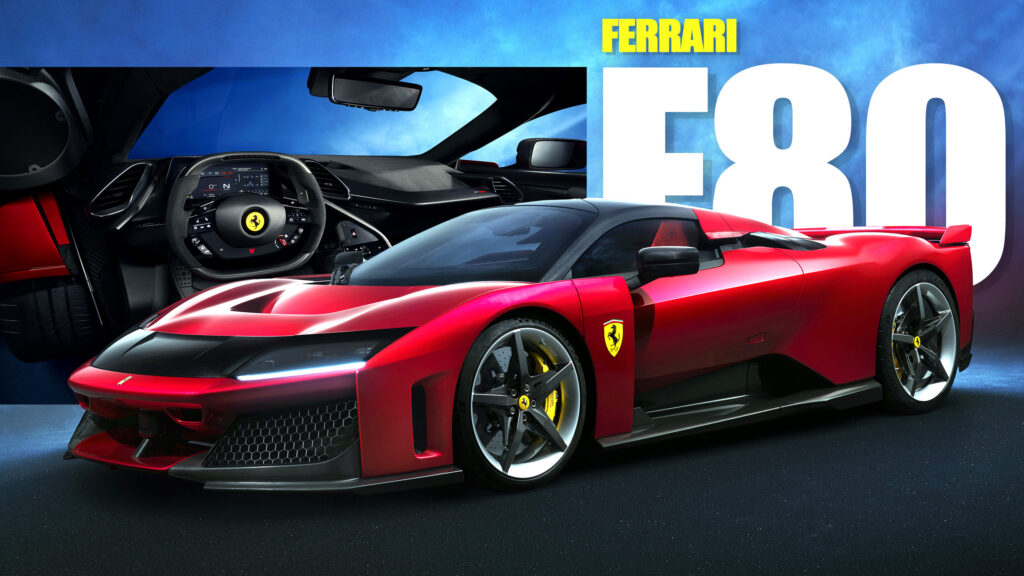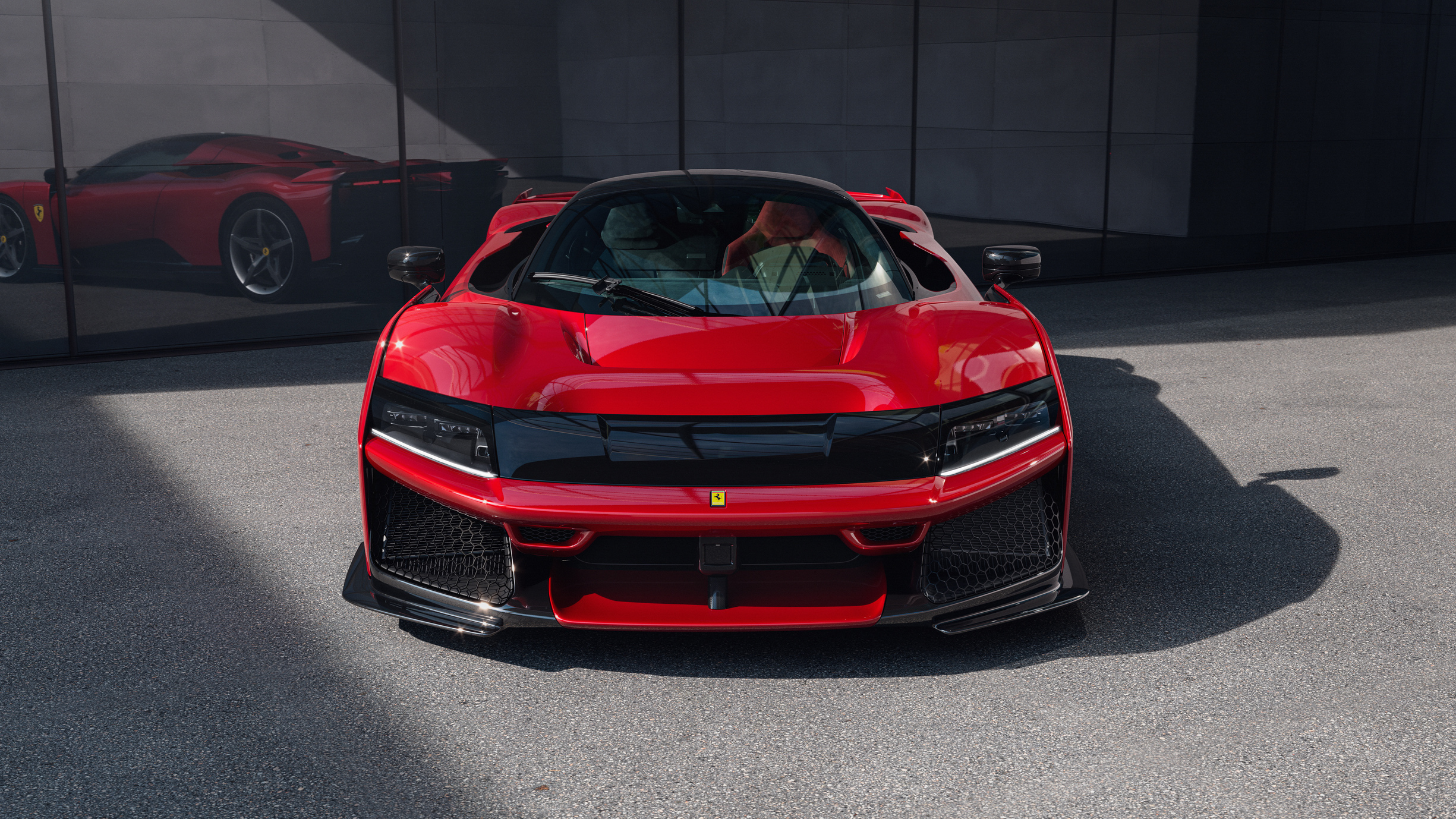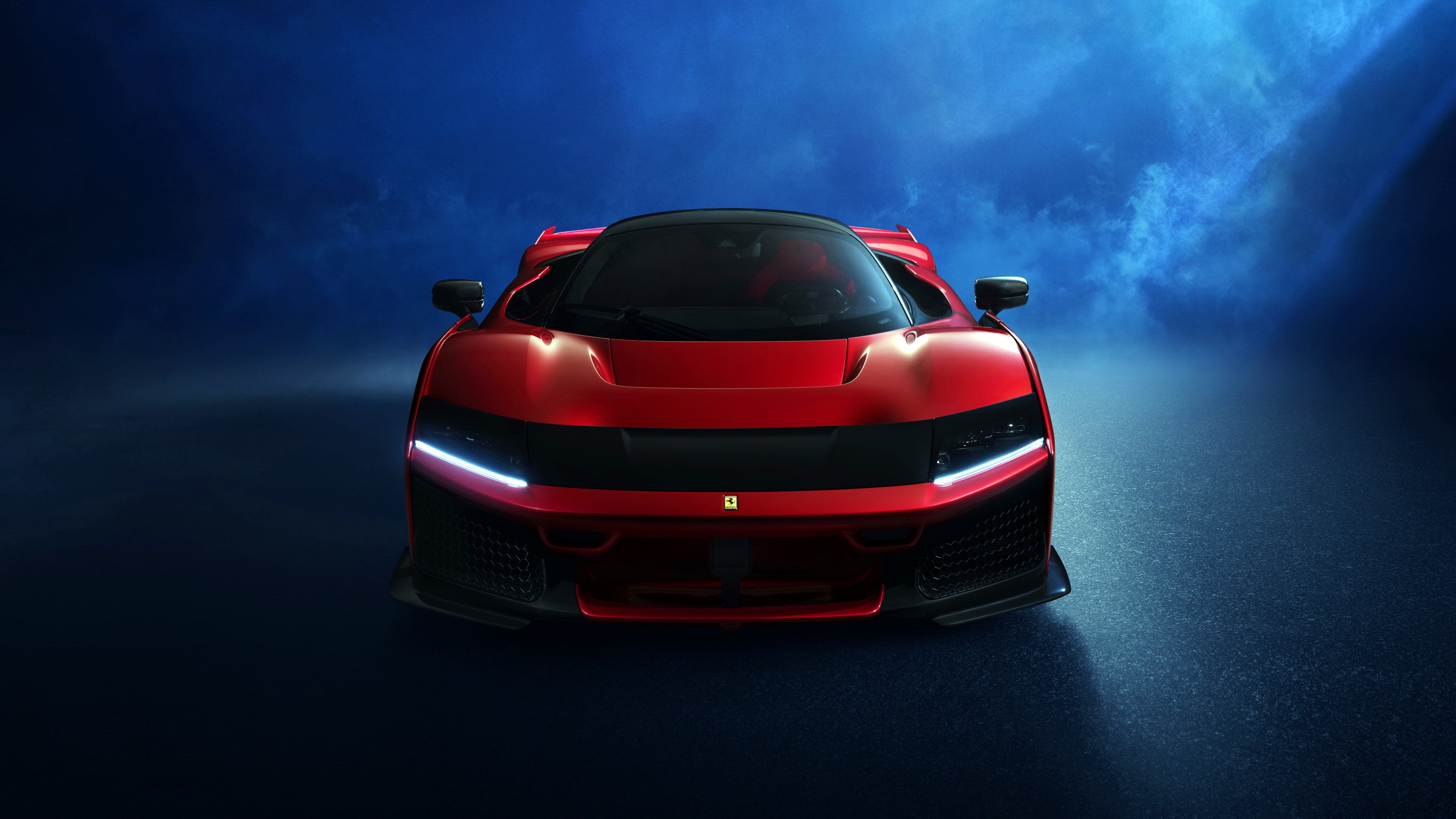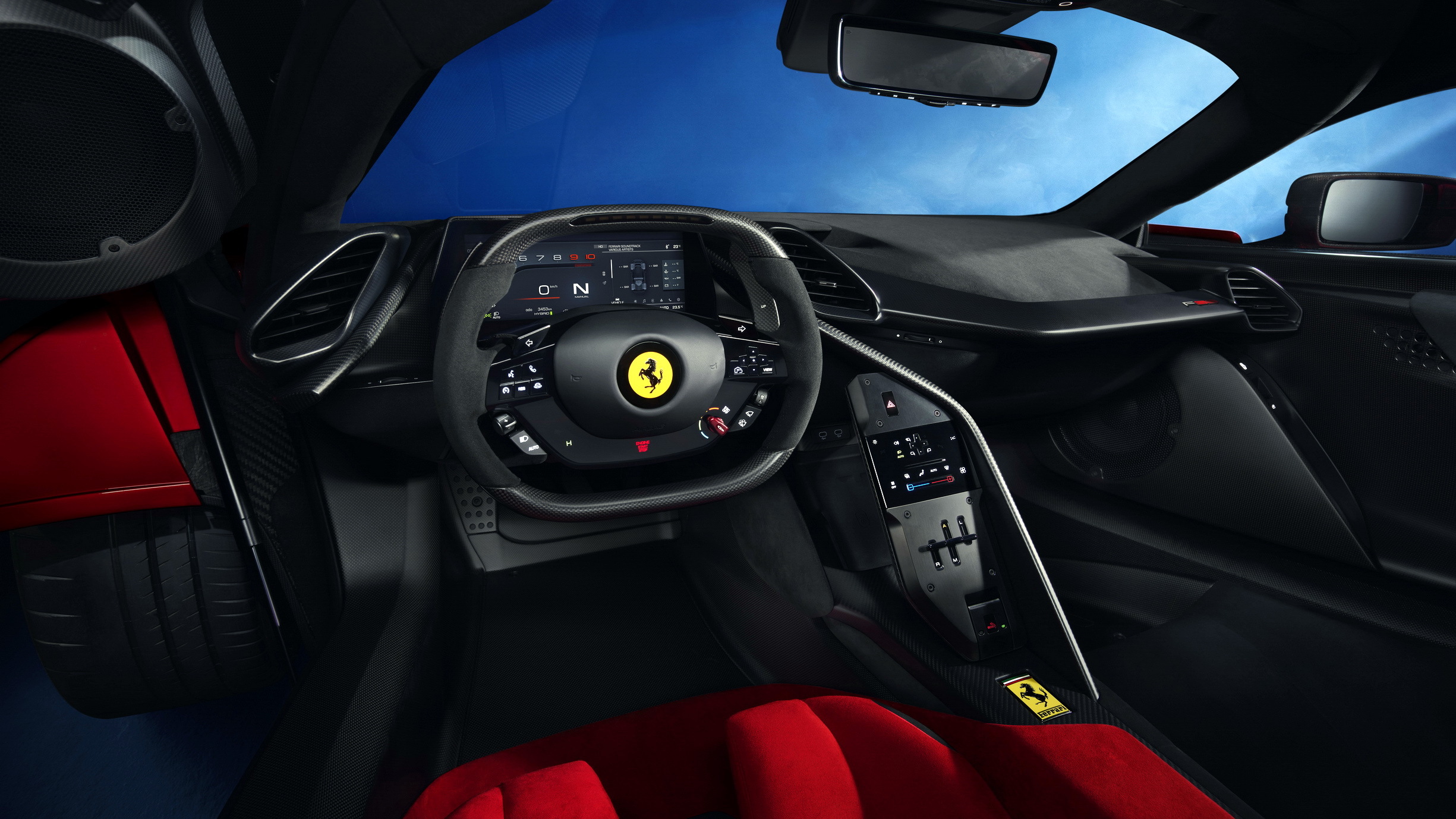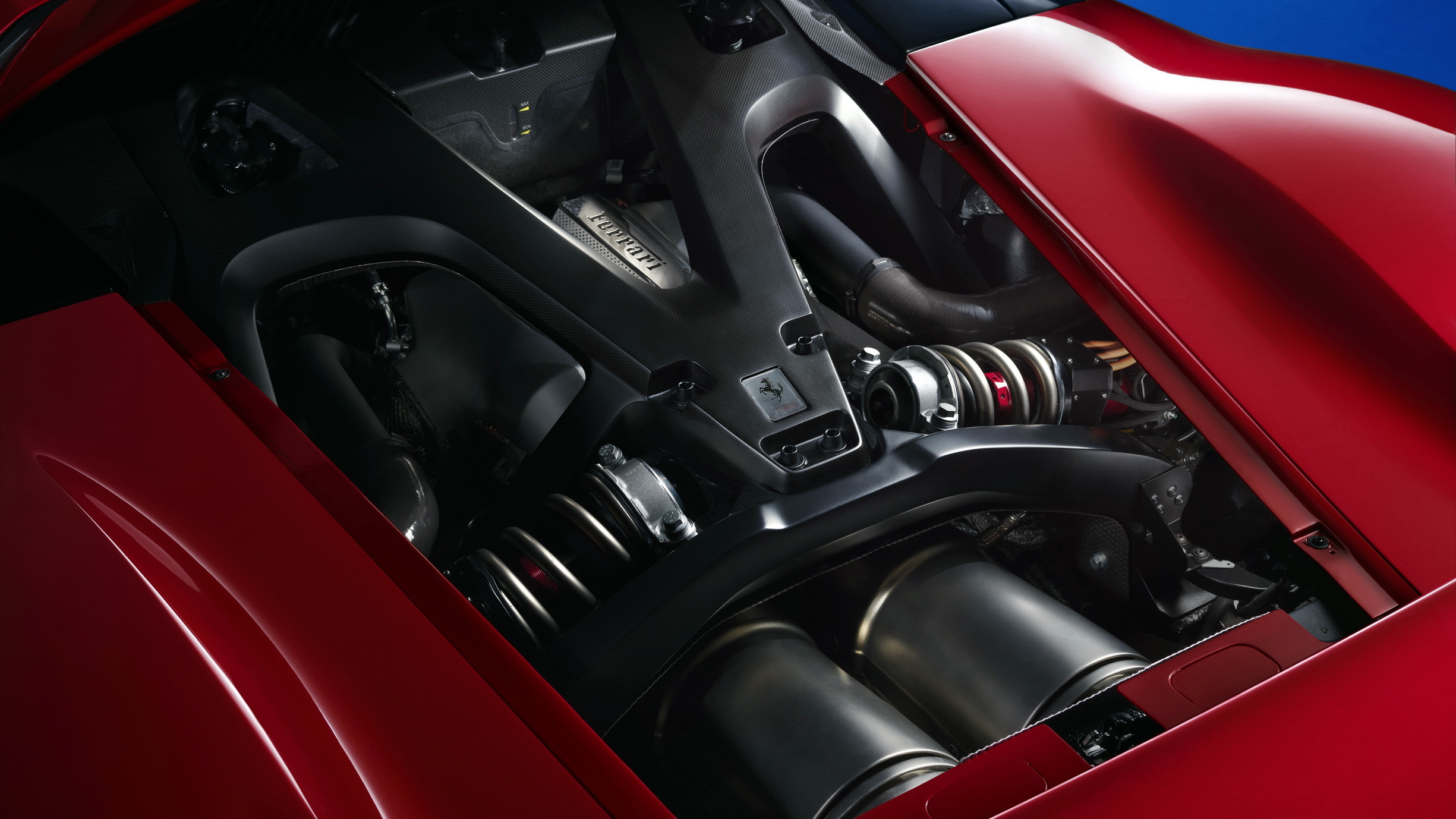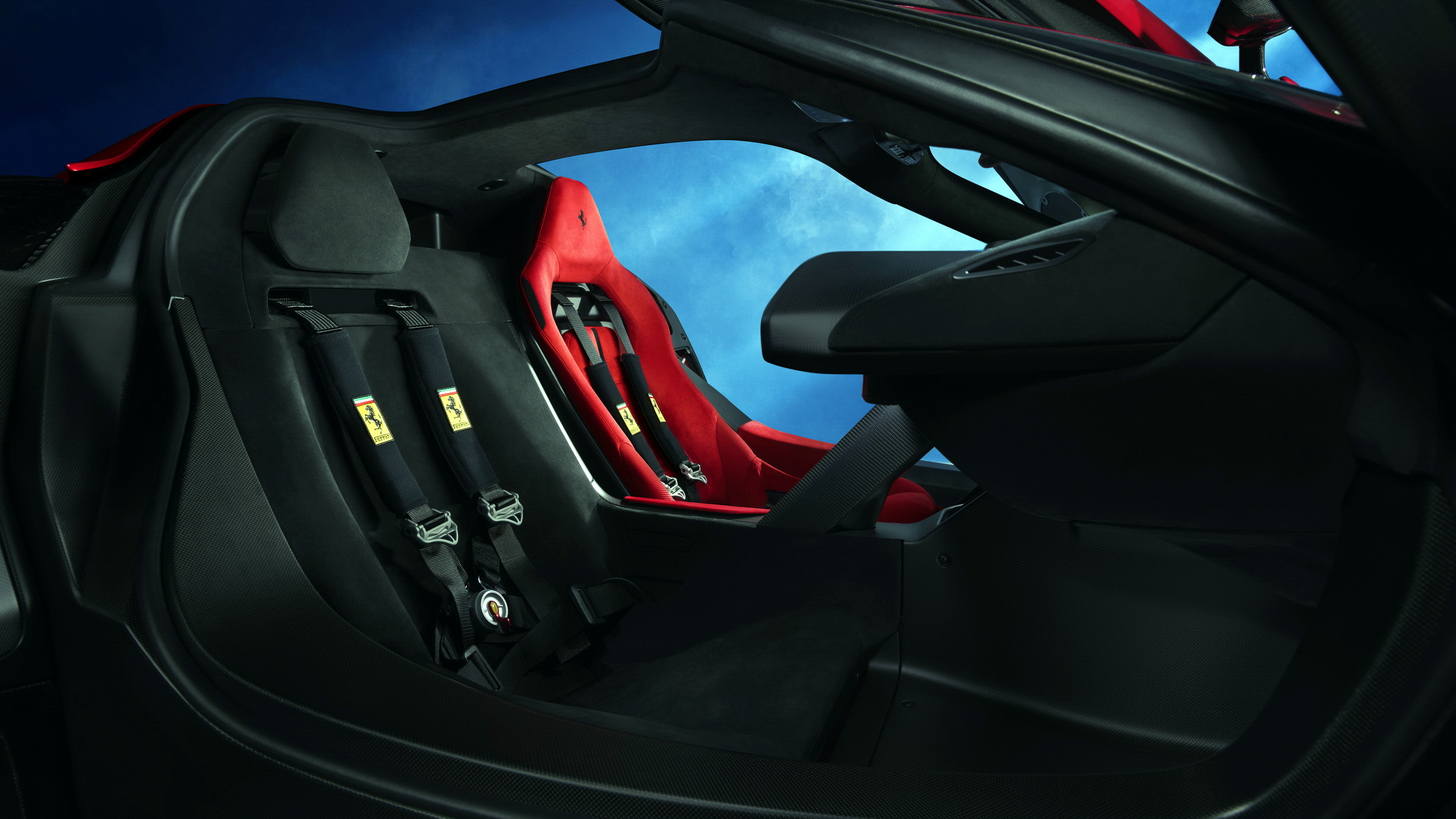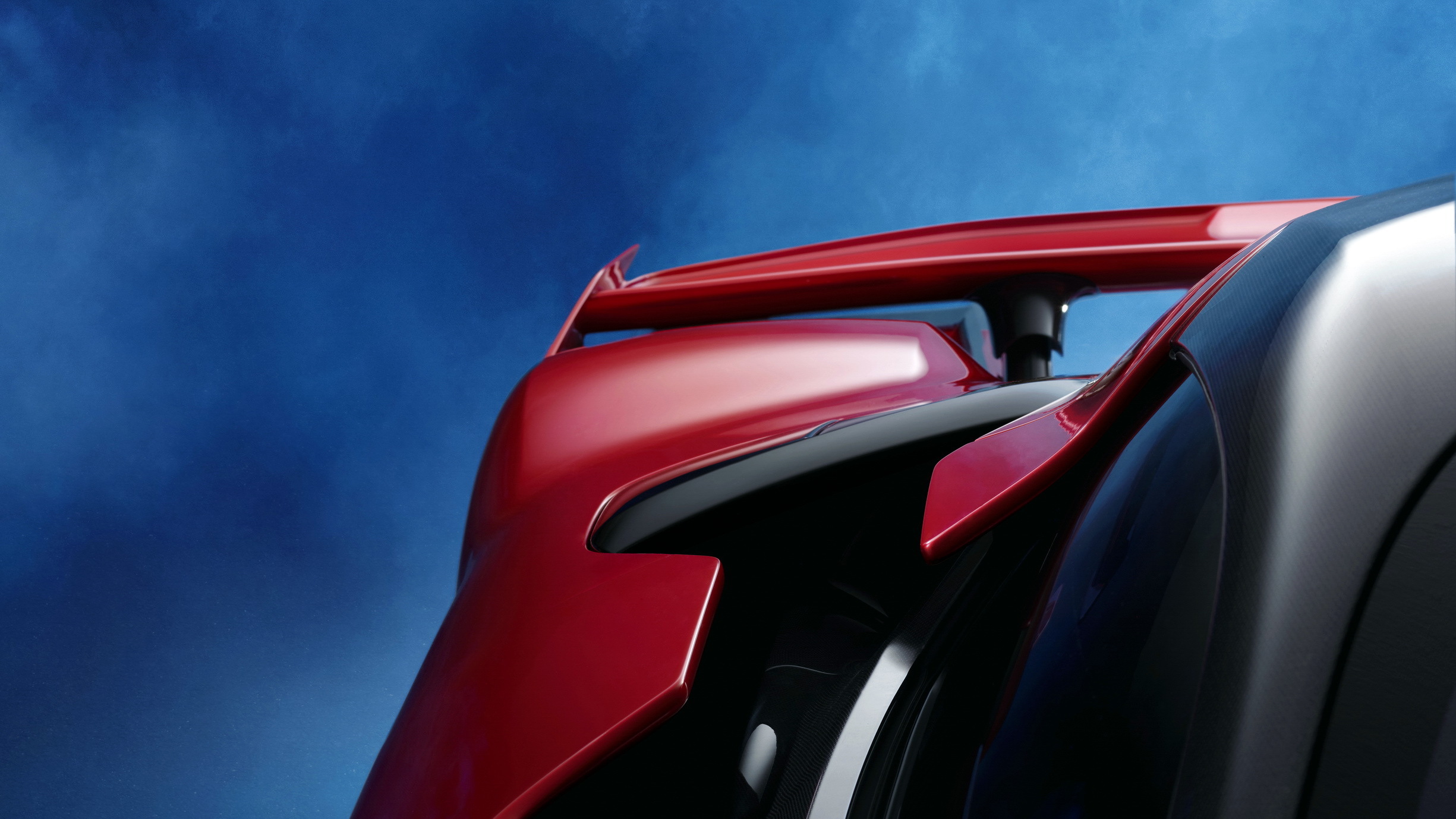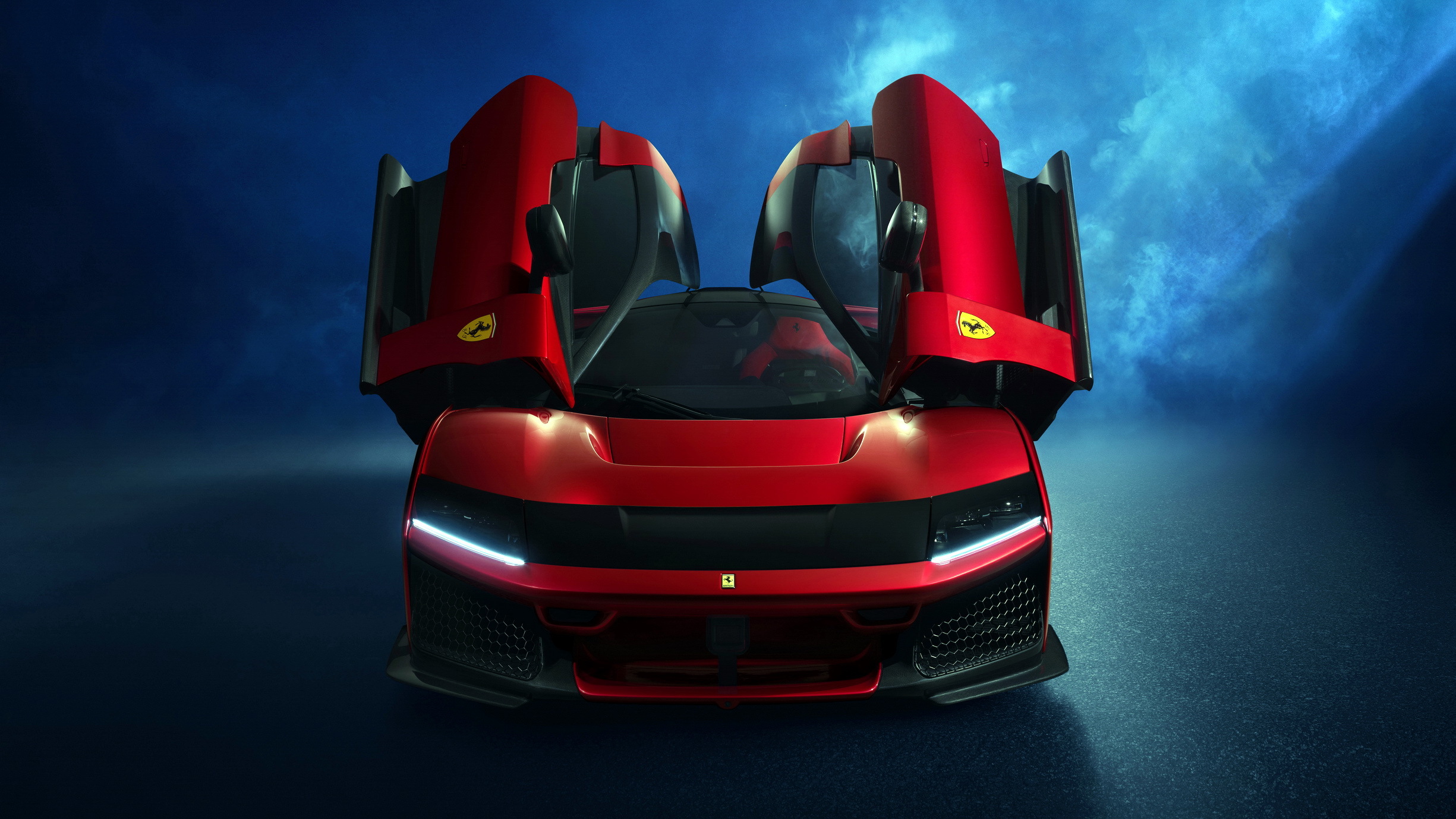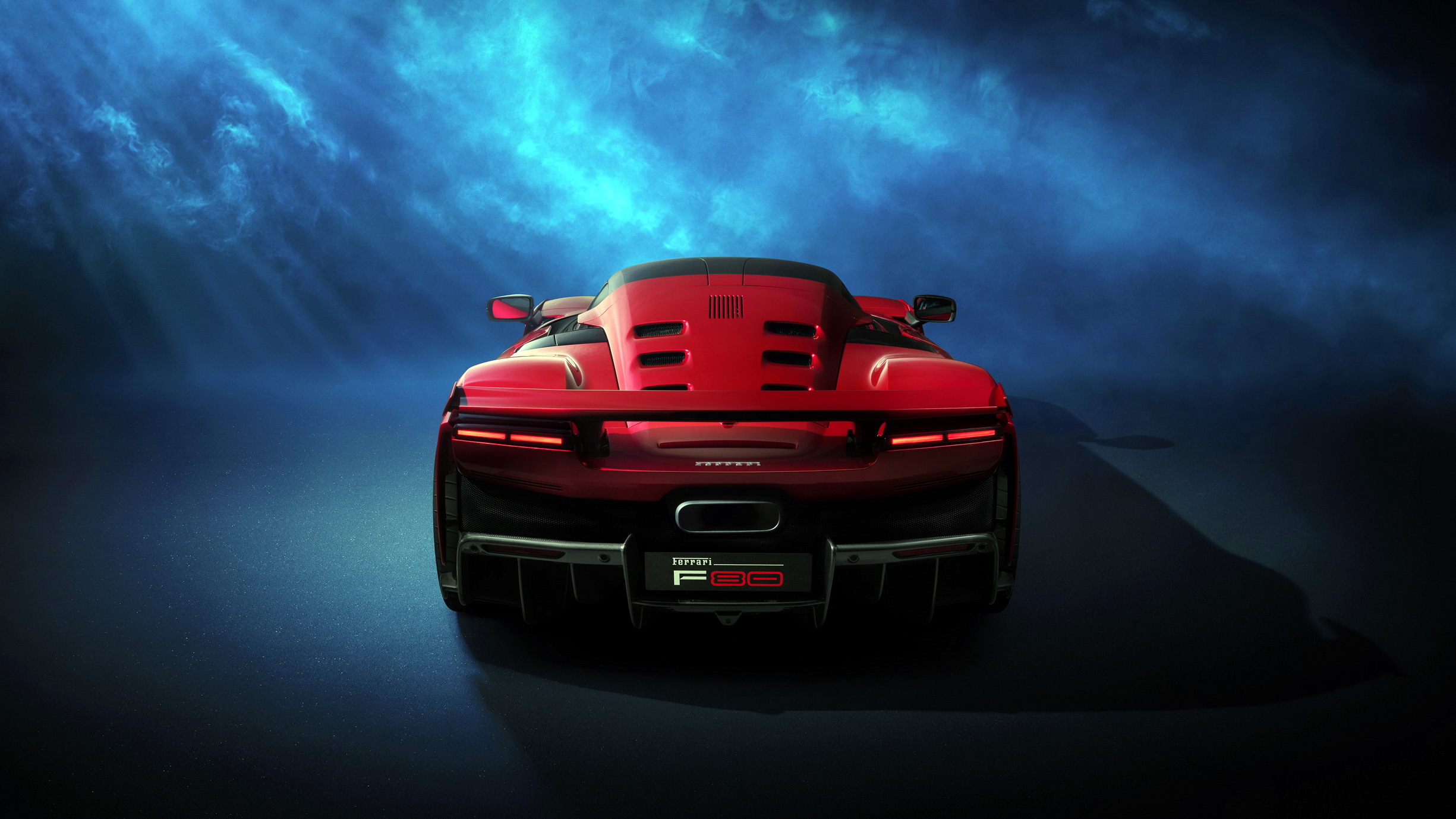The F80 is Ferrari’s brand-new hypercar, previously referred to by its codename F250, and it’s not here to play nice. Out goes the operatic V12, replaced by a snarling twin-turbo V6 hybrid that cranks out out a brutal 1,184 horsepower (1,200 PS), packed with enough tech to make a NASA engineer blush.
Purists might grumble about the loss of a naturally aspirated V12, but this V6 has pedigree – it’s closely related to the engine that powered the 499P racer to back-to-back Le Mans victories. 0-62 mph comes in a claimed 2.15 seconds while top speed is “over 217 mph.”
Related: Ferrari’s EV Makes Fake V8 Sounds, Is This What Buyers Want?
This being a once-in-a-decade event and Ferrari’s flagship for years to come there’s so much tech that the press release runs to almost 7,000 words. But we’ve sifted the innovations from the marketing hyperbole to come up with 9 things you really must know about the F80.
#1 V6, Not V12
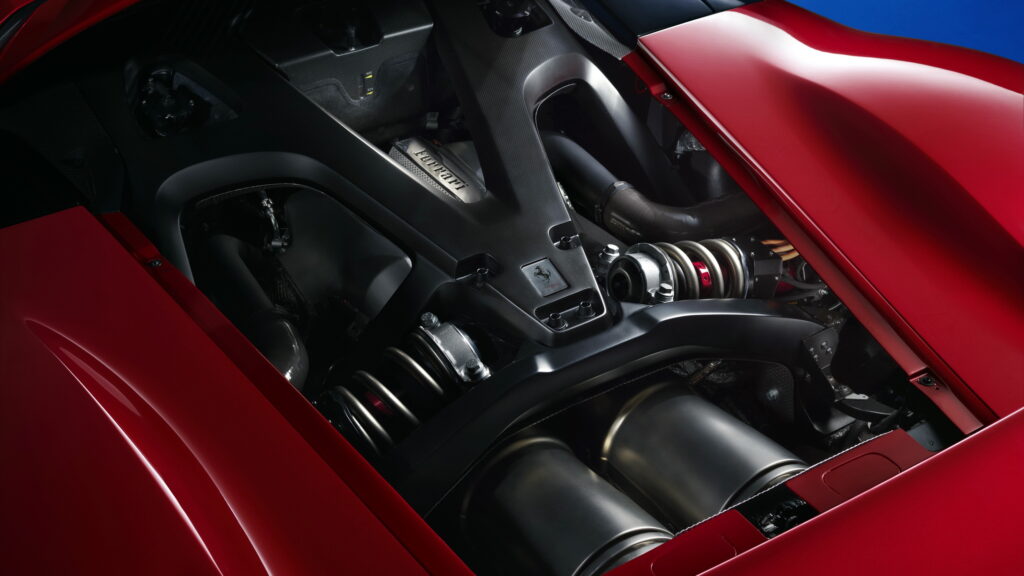
Ferrari’s last three hypercars – LaFerrari, Enzo and F50 – have all been powered by V12 engines, but the the F80 has half as many cylinders. The F163CF is a 120-degree V6 related to the engines in both the 296 GTB and the Le Mans-winning 499P. But instead of the 654 hp (663 PS) the 296’s combustion motor makes, the no-heavier F80’s ICE componentry pumps out 888 hp (900 PS), and torque is up from 546 lb-ft (740 Nm) to 627 lb-ft (850 Nm). And that’s before we’ve added the hybrid boost.
#2 Three Electric Motors But No EV Mode
The rear-drive 296 GTB has one electric motor, but the F80 adopts a three-motor setup much like the SF90. Two motors in the nose deliver up to 282 hp (286 PS / 210 kW) to the front wheels and enable a torque vectoring function, and Ferrari says the 61.5 kg (136 lbs) weight penalty is 14 kg (31 lbs) less than on the SF. A third motor sends 80 hp (81 PS / 60 kW) to the rear wheels, but can generate 94 hp (95 PS / 70 kW) by harvesting braking energy.
Adding the hybrid muscle gives the F80 a combined 1,184 hp (1,200 PS) compared with 819 hp (830 PS) for the 296, and makes the F80 Ferrari’s first all-wheel drive hypercar. But despite the availability of so much electric energy the F80 does not have an EV mode.
#3 It Knows When You Need Extra Boost
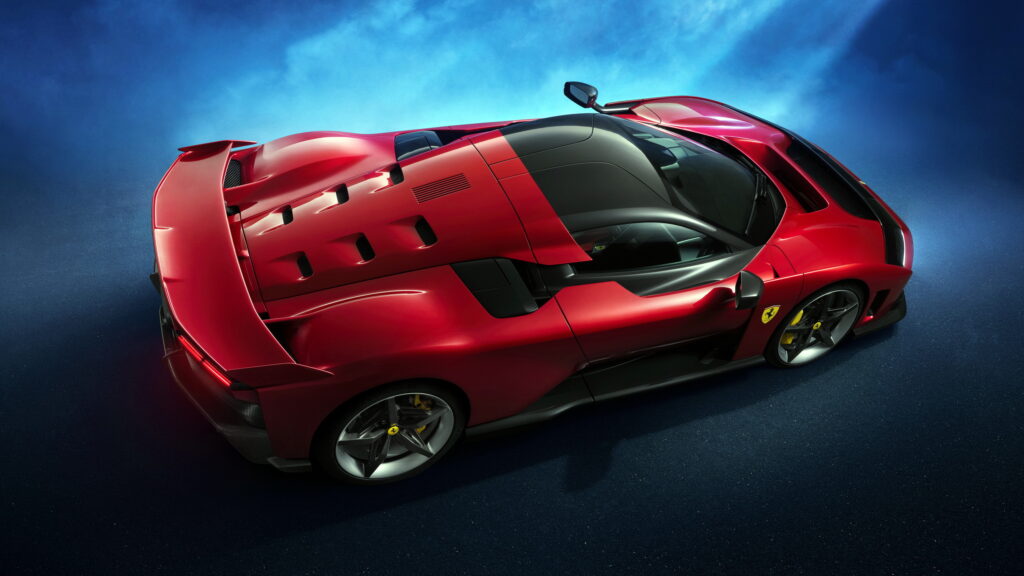
Ferrari has tailored the powertrain’s boost to mimic the feel of a naturally aspirated engine, but the really clever bit is something called Boost Optimization. Once switched on, the driver takes a sighting lap of his chosen circuit and the F80 logs the curves and straights, working out where a performance boost might be useful and is ready to deploy it on the next lap.
#4 Only the F80 Gets a Carbon Chassis
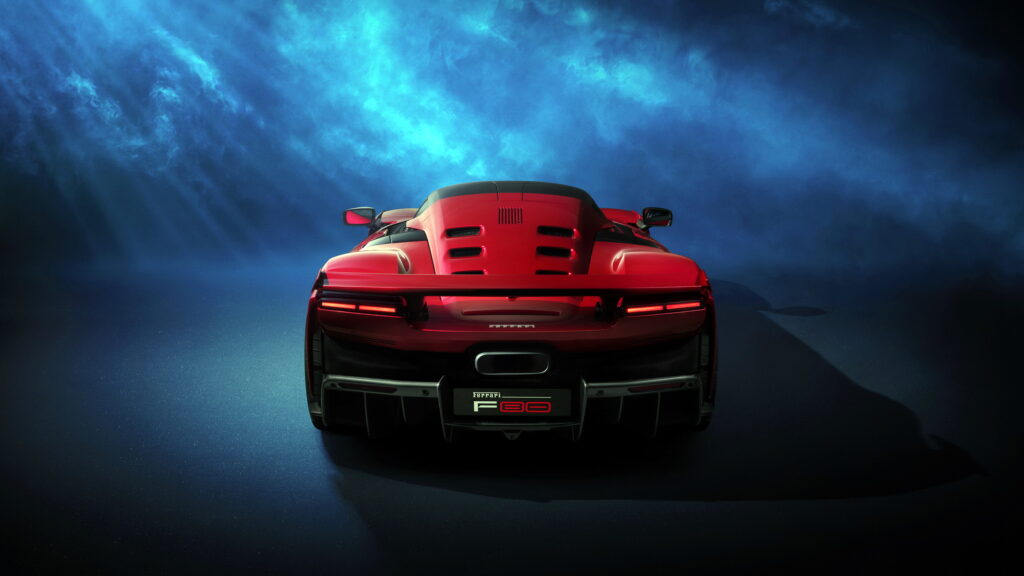
Unlike McLaren, which uses a carbon chassis on every car in its lineup, right down to the entry-level Artura, Ferrari sticks to aluminium for its series road cars, saving composite tech for hero cars like the F80. But aluminium, which is better at absorbing crash energy, is still employed here for the front and rear subframes.
#5 The Front Fenders Were Inspired by the F40
We’ve seen the F80’s Daytona-inspired black visor snout several times now. It appeared on the Purosangue SUV and also the limited-run Daytona SP and here it is again on Maranello’s latest hypercar. Ferrari says the F80’s design offers clues as to where the brand’s design language is heading so maybe we can expect the black strip to become a calling card. But the 365 GTB/4 Daytona isn’t the only classic Ferrari that design boss Flavio Manzoni and his crew have borrowed from. The boxy front fenders are ripped straight from the F40.
#5 The Downforce Package Makes a 911 GT3 RS Look Flighty
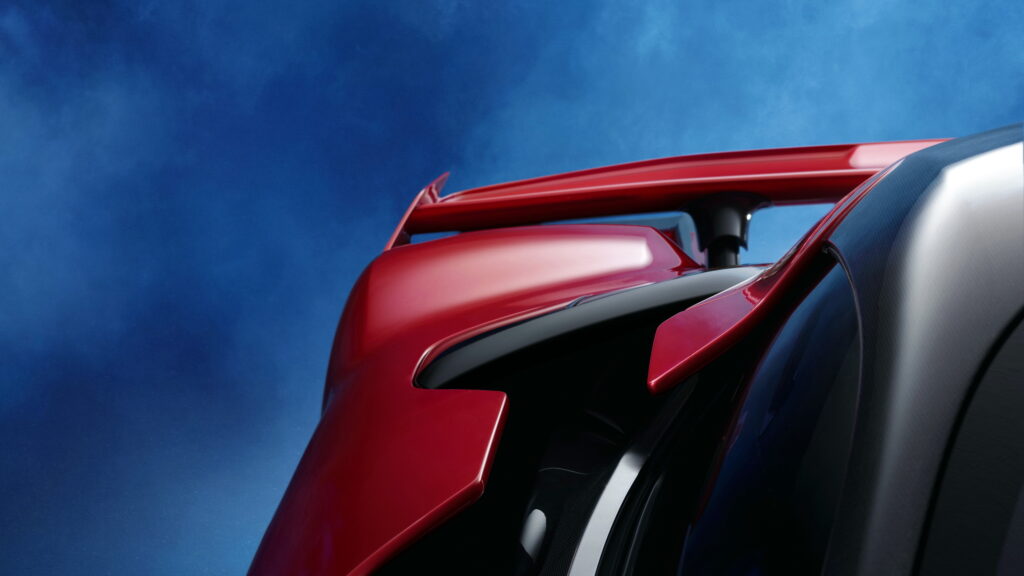
Porsche’s 911 GT3 RS summons a mighty 860 kg (1,896 lbs) of downforce at 177 mph (285 kmh). It generates an outrageous amount of squish, but the RS looks like its going to blow away next to the F80, which achieves a stonking 1,000 kg (2,200 lbs) of downward thrust, and at only 155 mph (250 kmh). It’s achieved by a combination of airflow management through and over the nose, via the rear diffuser and by the modulation of an active rear wing.
#6 You’ve Heard of a 2+2, This Is a 1+
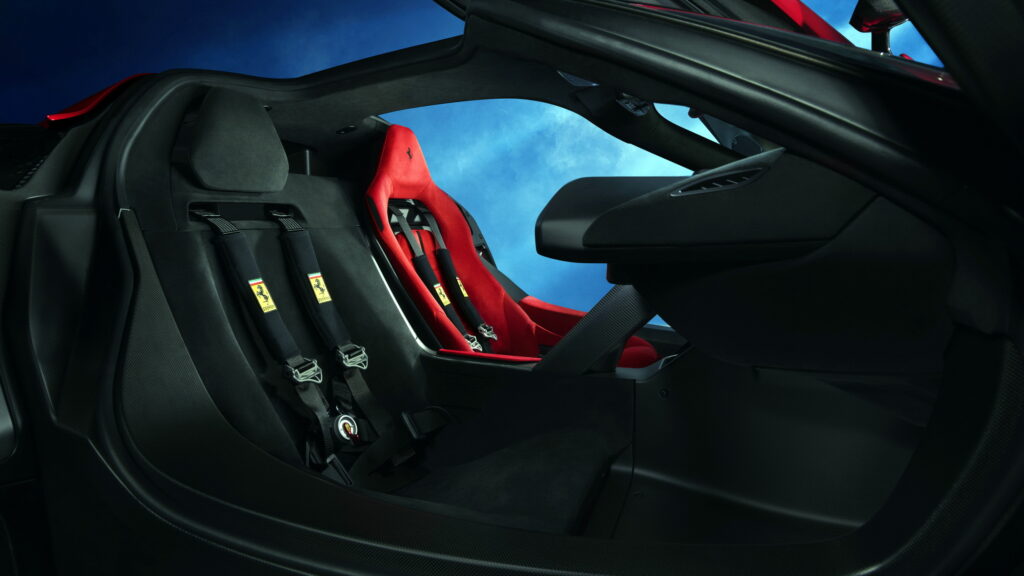
You know that feeling when you’re so engrossed in a good road that you entirely forget you’ve got someone riding shotgun? Ferrari has designed the F80 to feel like that from the moment you slide behind the wheel. While the driver gets an adjustable red bucket seat the passenger’s chair is set further back (allowing for a narrower cockpit) and upholstered in the same muted colors as the rest of the interior, meaning the F80 feels more like a single seater.
Ferrari calls it a “+1” and has even angled the console so sharply towards the driver that the passenger will struggle to easily see digital heater controls, or the transmission shift toggle that once again riffs on classic open gate shifters, but like the 296 is crying out for a big chrome wand.
#7 Real Steering Wheel Buttons Are Back
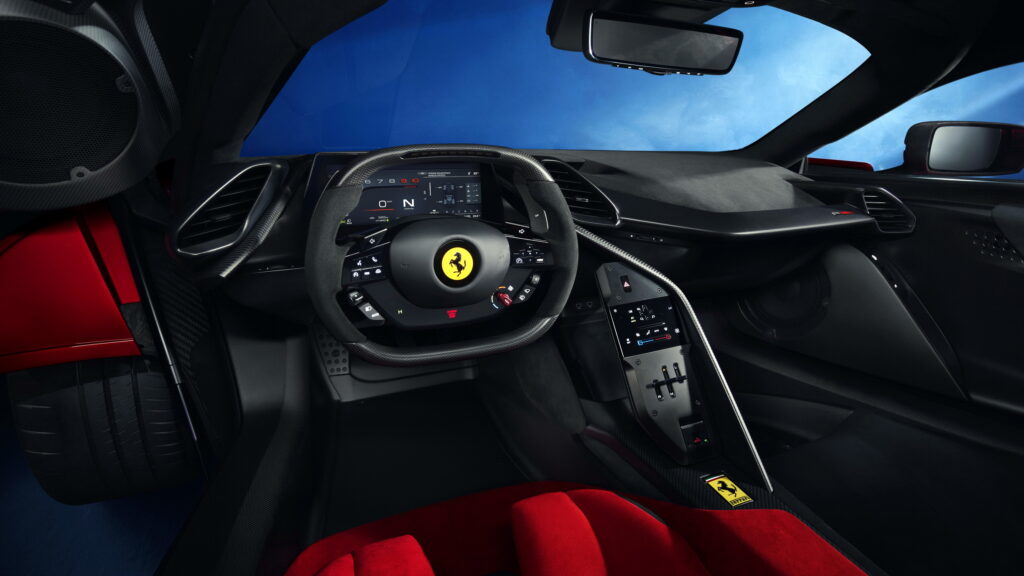
It’s not only the F80’s exterior design work that we’ll see on future, more affordable Ferraris. The steering wheel is also destined for a life on other models, and that’s great news because it features old fashioned physical buttons instead of the infuriating touch-sensitive type fitted to the SF90 and 296.
#8 The Suspension Borrows from the Purosangue SUV
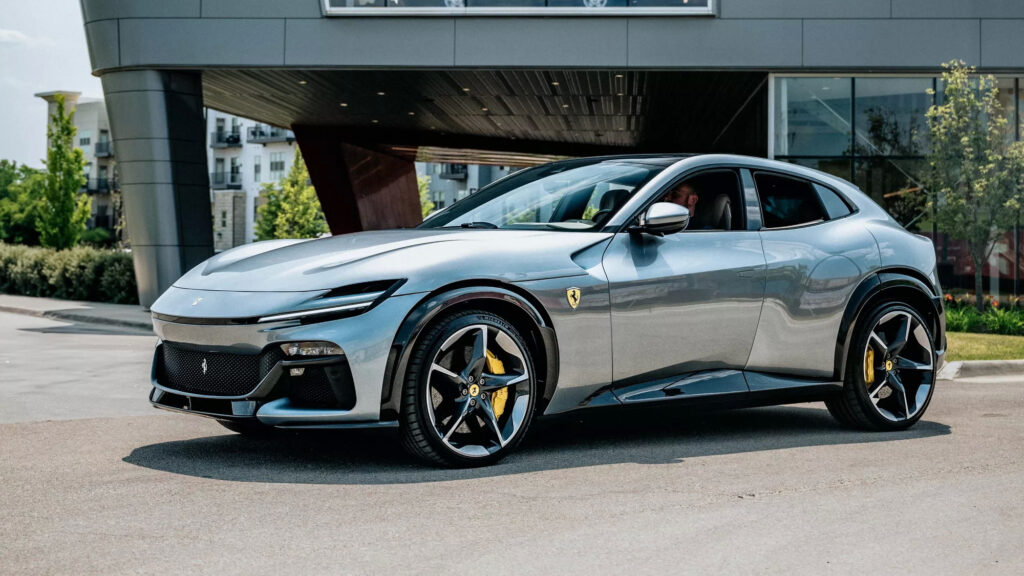
The F80 might share its engine with the 296 but it’s the four-seat Purosangue SUV that lends a hand when it comes to the suspension setup. You won’t find racecar-style pushrod dampers or 3D-printed wishbones on the Purosangue, but both cars swap conventional anti-roll bars for four 48-volt electric motors that keep the body flat in cornering to minimize the effects of weight shifting. Ferrari also worked with Brembo to come up with next-generation CCM-R Plus carbon brakes that are claimed to offer twice the mechanical strength and 300 percent better thermal conductivity than older carbon stoppers.
#9 Ferrari Is Building 799, So It’s Not That Rare
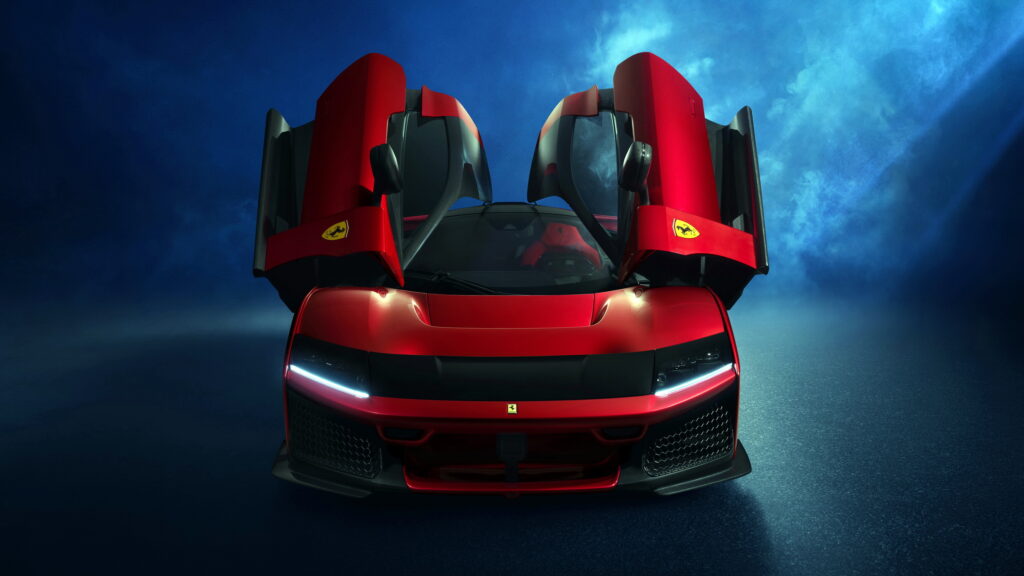
The F80 costs around $3.9 million, but there are obviously no shortage of enthusiasts in the world with that kind of dough because Ferrari says it will build 799 examples. That compares with 499 examples of the LaFerrari. Those cars were massively oversubscribed so it looks like Ferrari has decided it might as well cash in on the demand this time. And although Maranello hasn’t confirmed that an Aperta Spider version will follow, only a fool would bet against it.



